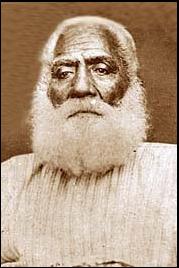|
||||
|
||||
 King: Ratu Sera Cakobau REX 5.6.1871 - 10.10.1874 |
|
||||
|
||||
|
|
|
|||
|
N.11, CR.2, P.UNL 1 Dollar 1.10.1873 |
Images Needed |
|||
|
|
|
|||
|
|
|
|||
|
N.15, CR.4, P.UNL 1 Pound 1.10.1871 |
Images Needed |
|||
|
Two
early Suva , Fiji settlers, Wm. H. O'Halloran Brewer & Paul Joske,
convinced from earlier experiments in sugar manufacturing conducted in
Fiji, established the first sugar mill in the islands in 1872. They
produced small quantities of crystallized sugar which they sold for 5d
per pound and eventually scaled up production shipping ten tons to
Australi |
|
N.10 |
CR.1 |
P.UNL |
¼ Dollar |
1.1.1873 |
204 x 110 mm |
Watermark? |
|
N.11 |
CR.2 |
P.UNL |
1 Dollar |
1.1.1873 |
122 x 78 mm |
Watermark |
|
N.12 |
CR.3 |
P.UNL(1) |
$2 ½ |
1.10.1871 |
192 x 110 mm |
Partial Watermark along top edge |
|
N.15 |
CR.4 |
P.UNL |
1 Pound |
1.10.1871 |
195 x 110 mm |
Watermark "Hodgkinson & Co. |
(1) Previously listed in SCWPM, 3rd
Edition as P.A1
** Rogers & Cantrell, Paper Money of Fiji I, published
1989 by the
International Bank Note Society
|
CL1
We gratefully acknowledge CL1 for provided these images. * We gratefully acknowledge Neville Cuthbert who provided images used in this section.
We gratefully
acknowledge Don Cleveland, IBNS Assistant General Secretary & Assistant
Treasurer for Australasia
This section has been renumbered in accordance with the 12th Edition of the SCWPM, Modern Issues, 1961 - Present |
![]()